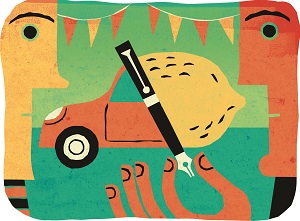Democrats and Republicans passionately disagree about the pros and cons of the Patient Protection and Affordable Care Act (ACA). But even the most partisan policymakers can agree that the ACA debate has brought a somewhat obscure economics concept — adverse selection — into popular parlance.
In the market for individual health insurance, adverse selection refers to the fact that, all else being equal, sick people are more likely to purchase health insurance than healthy people. In many cases, health insurers cannot observe the difference between sick people and healthy people. Prior to implementation of the ACA, many insurers required customers to disclose extensive details about their health status. Insurers then used this information to screen applicants and set premiums.
Under the ACA, however, health insurers can set premiums only on the basis of age, which is a rough proxy for health status. They can charge older people up to three times more than younger people, but even this price difference is not enough to cover the cost difference between the average 64-year-old and the average 21-year-old. So if insurance plans within an ACA exchange fail to attract sufficient shares of young people, they might have to raise premiums for everyone, which would make it even harder to attract and retain young people. This could result in an adverse selection "death spiral."
Adverse selection occurs whenever asymmetrical information — information known to one party but not the other — makes it difficult for potential trading partners to distinguish between high-risk and low-risk transactions. This problem is particularly endemic to insurance markets. Without underwriting safeguards, for example, people could delay buying homeowners' insurance until their houses are on fire. Likewise, people could postpone purchasing life insurance until they are terminally ill. If insurance companies unwittingly assumed such risks, the resulting claims would drive up the cost of insurance for everyone.
Adverse selection is most commonly studied in the context of insurance, but it applies to many other markets. For example, a restaurant owner in Charlottesville, Va., decided to replace his individually priced entrees with an all-you-can-eat buffet. He expected a certain amount of adverse selection — people with bigger appetites would be more likely to select his restaurant — so he priced the buffet higher than the entrees on his old menu. The owner was not surprised by the copious quantities that his new customers consumed, but he was shocked by the massive amounts they wasted. Rather than risking a death spiral by raising the buffet price, the owner added a surcharge for customers who did not clean their plates.
Another hotbed for adverse selection is the used-car market. In 1970, economist George Akerlof made that connection in a Quarterly Journal of Economics article, "The Market for 'Lemons.'" He noted that as soon as a car's owner learns whether it is a lemon or not, "an asymmetry in available information has developed." Based on this premise, Akerlof modeled a used-car market in which all cars have the same price because buyers cannot discern between good risks and bad risks. If a car is a lemon, its owner will sell it because the market price exceeds the car's true value, but if the car is good, its owner will keep it because the market price falls short of the car's true value. When sellers know the quality of individual cars and buyers know only the average quality of all the cars, the market sputters like a 1970 Gremlin. But when buyers and sellers are able to discern the quality of individual cars, the market purrs like a late-model Honda.
Flexible prices based on symmetrical information would guard against adverse selection, but as noted above, the ACA prevents health insurers from discriminating on the basis of health status. So they use age as a rough proxy for health status as they attempt to set premiums that are competitive and profitable.
In December 2013, a Kaiser Family Foundation study estimated that young people (ages 18-34) comprise 40 percent of the potential market for ACA insurance exchanges. And at the end of the first open-enrollment period, 28 percent of enrollees were from that age group. That share is only 3 percentage points better than the Kaiser study's worst-case scenario, but the national percentage is not as important as the share of young people joining each exchange. As of late April, the District of Columbia's exchange ranked first with 45 percent. Utah was a distant second with 33 percent, and West Virginia was last with 19 percent.
No one knows what percentage would signal a death spiral, but a report from the National Association of Insurance Commissioners emphasized that states must be vigilant against adverse selection under the ACA. The report warned that "if the market outside of the exchange is perceived as more attractive to younger and healthier people, the exchange could become a 'risk magnet' and will ultimately fail."




